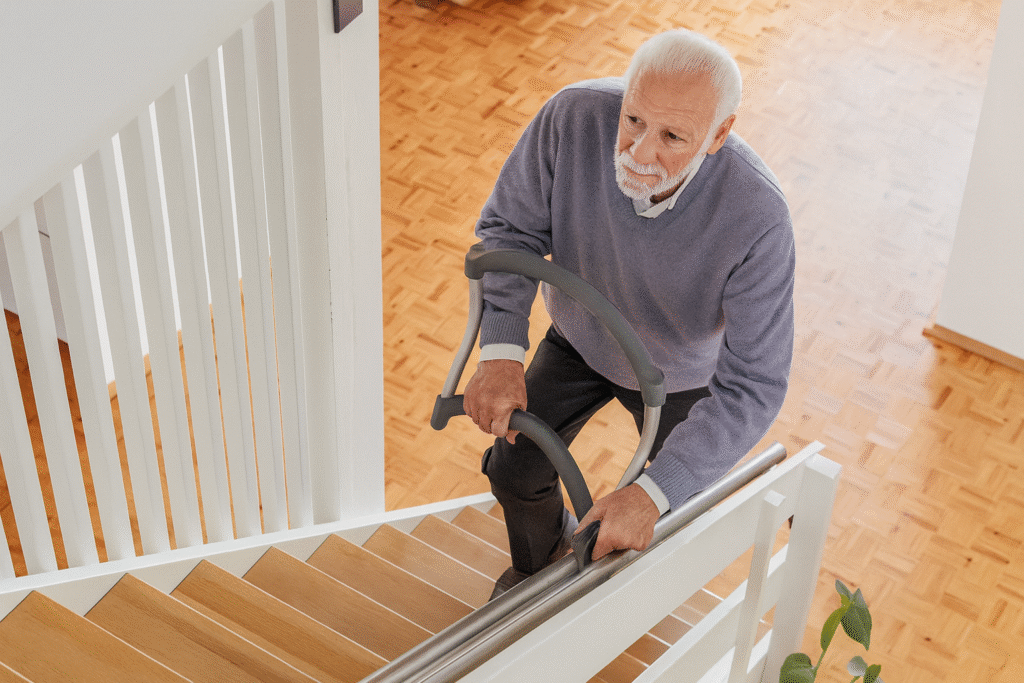
Disclosure: This post contains affiliate links. As an Amazon Associate, I earn from qualifying purchases.
Introduction
Creating a safe home environment is one of the most powerful ways to protect older adults from preventable injuries. For many families, the home is where seniors feel most comfortable—but it’s also where most serious falls and accidents occur. As a wound-care physician, I’ve seen firsthand how even minor environmental hazards can lead to devastating injuries, prolonged hospital stays, and loss of independence.
In this guide, I’ll share evidence-based home safety tips for seniors to help reduce risks, preserve mobility, and support aging in place. These recommendations are simple to implement, cost-effective, and designed to promote long-term independence and confidence for seniors and their caregivers.
Why Home Safety Matters for Seniors
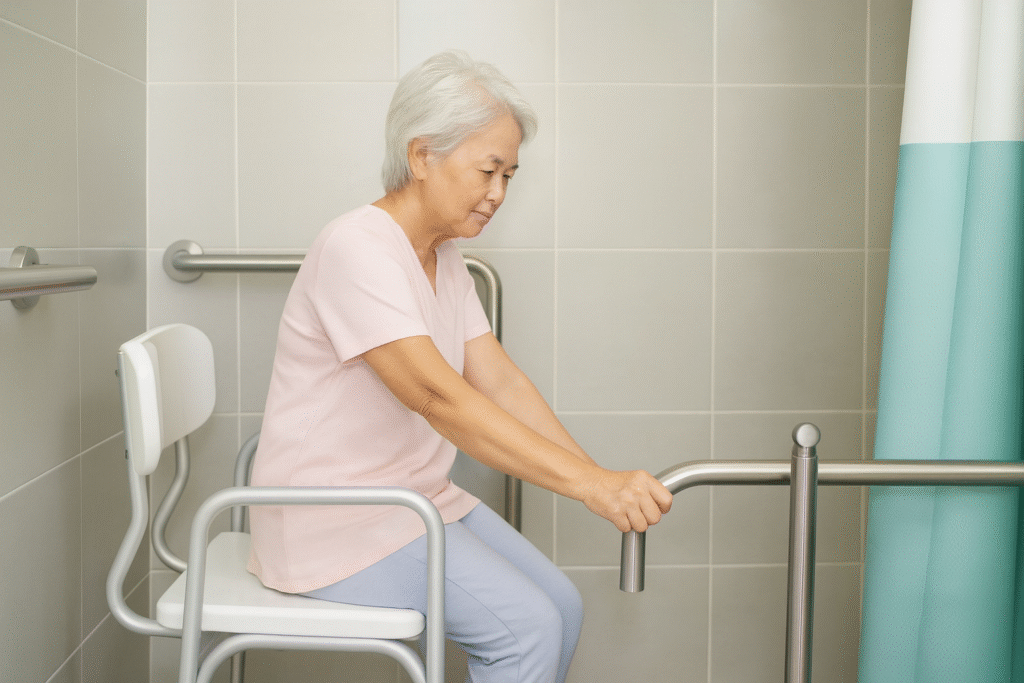
- Preventing life-altering falls is crucial for independence. Falls are the leading cause of injury-related hospitalizations in older adults, and a single fall can trigger a cascade of complications—from fractures to functional decline.
- Safe environments reduce caregiver stress and burnout. When hazards are removed, caregivers can focus on meaningful interactions instead of constantly worrying about accidents.
- Safety upgrades support aging in place. Most seniors prefer to remain in their homes as they age, and modifications can delay or prevent the need for assisted living.
- Addressing risks early preserves mobility and confidence. Proactively eliminating hazards allows seniors to move freely and stay active, which protects physical and emotional well-being.
According to the Centers for Disease Control and Prevention (CDC), more than one in four older adults experiences a fall each year, and these incidents are the leading cause of both fatal and nonfatal injuries among seniors.
Creating a safer home is often the first step in maintaining independence—especially when combined with supportive mobility aids like walkers and rollators for seniors.
Common Safety Risks at Home
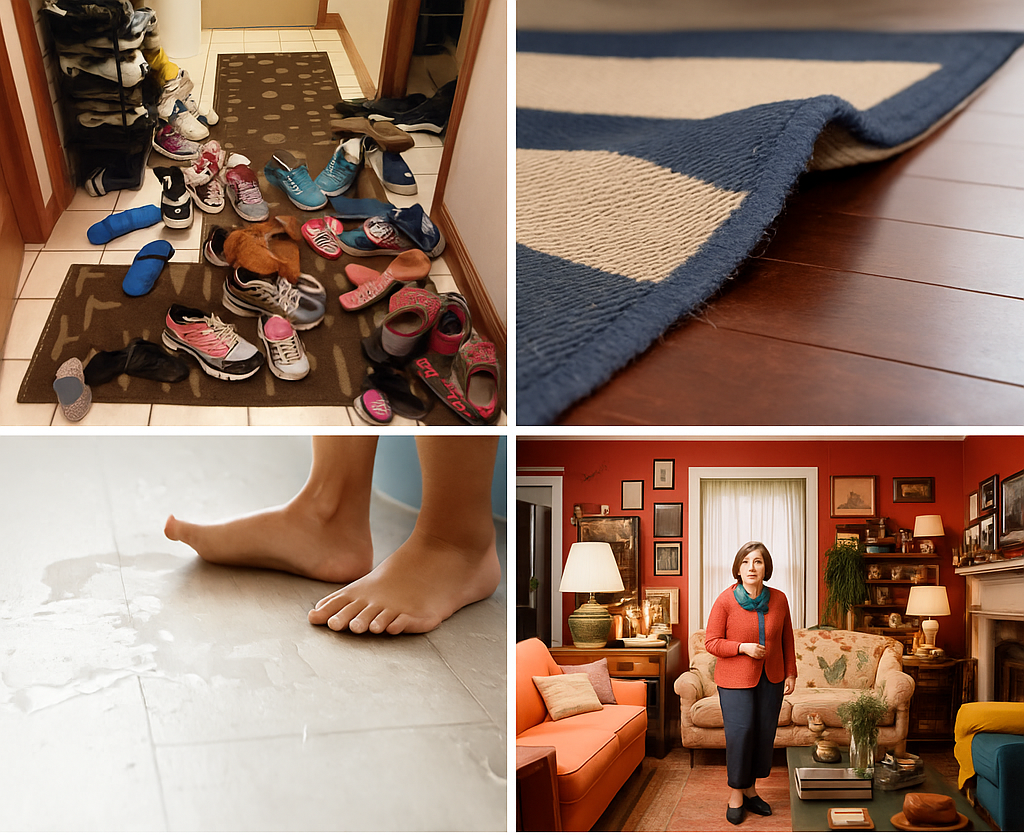
- Slippery surfaces from spills, polished tile, or wet floors create an invisible hazard. Even a thin layer of moisture can cause a sudden loss of balance and lead to severe injuries.
- Loose or unsecured rugs are a leading tripping risk. Area rugs without non-slip backing can catch on walkers, canes, or shuffling feet, causing sudden falls.
- Poor lighting reduces depth perception and increases missteps. Dim hallways, staircases, and bathrooms make it difficult for older eyes to navigate safely, especially at night.
- Cluttered walkways increase the chance of tripping. Shoes, electrical cords, or pet toys scattered across floors can obstruct pathways and create unpredictable hazards. Clutter can also make it difficult for mobility devices to pass through safely — our guide to lightweight wheelchairs for seniors covers options that work well in tight spaces.
- Stairs and uneven flooring magnify fall risk with each step. Inconsistent heights or worn steps can cause balance loss even with a handrail present.
Practical Home Safety Tips for Seniors
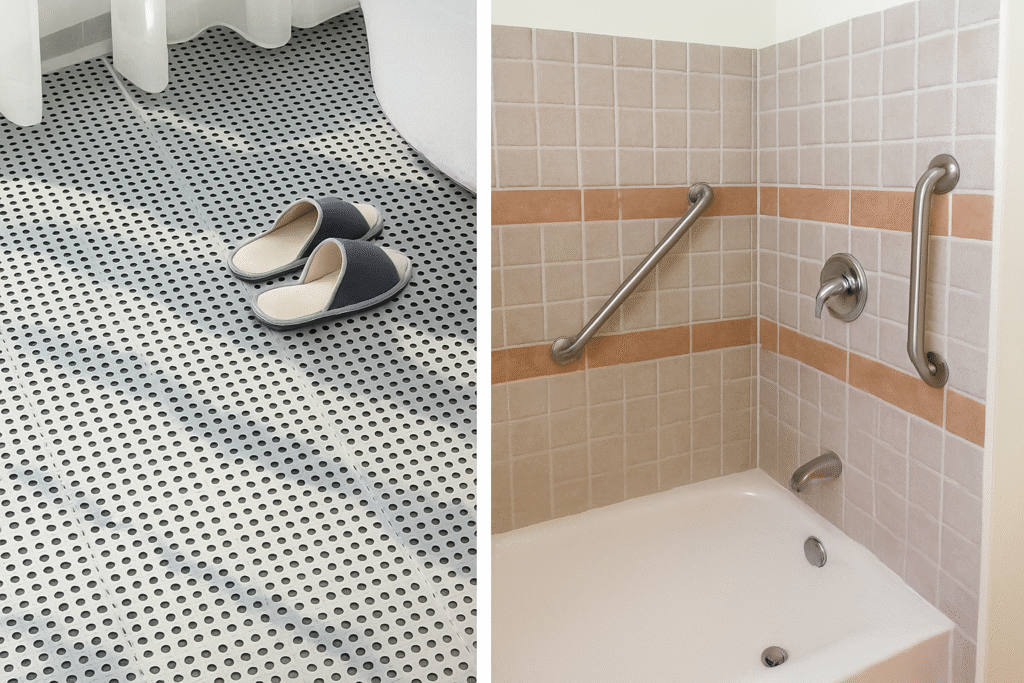
- Install grab bars and handrails in high-risk areas. Bathrooms, stairways, and entryways are common fall zones, and securely anchored bars provide critical support during transitions.
- Improve lighting throughout the home with bright, warm bulbs. Motion-activated night lights in bedrooms, hallways, and bathrooms help prevent nighttime falls.
- Eliminate loose rugs or secure them with non-slip pads. This simple change dramatically reduces trip hazards while maintaining comfort and décor.
- Reorganize frequently used items to avoid reaching or bending. Keeping essentials at waist height prevents overreaching, which can lead to balance loss.
- Add stable seating in bathrooms and entryways. Shower chairs and entry benches allow seniors to sit while dressing, bathing, or putting on shoes to reduce fatigue and instability.
- Use non-slip mats and shoes with grippy soles to prevent slips. Proper footwear and surface grip significantly lower the risk of losing traction.
- Clear pathways of clutter and widen walking areas. Decluttering floors and rearranging furniture gives mobility devices like walkers or rollators room to maneuver safely – see our guide to the best bed rails for seniors to further reduce nighttime fall risk.
Smart Home Modifications to Support Aging in Place
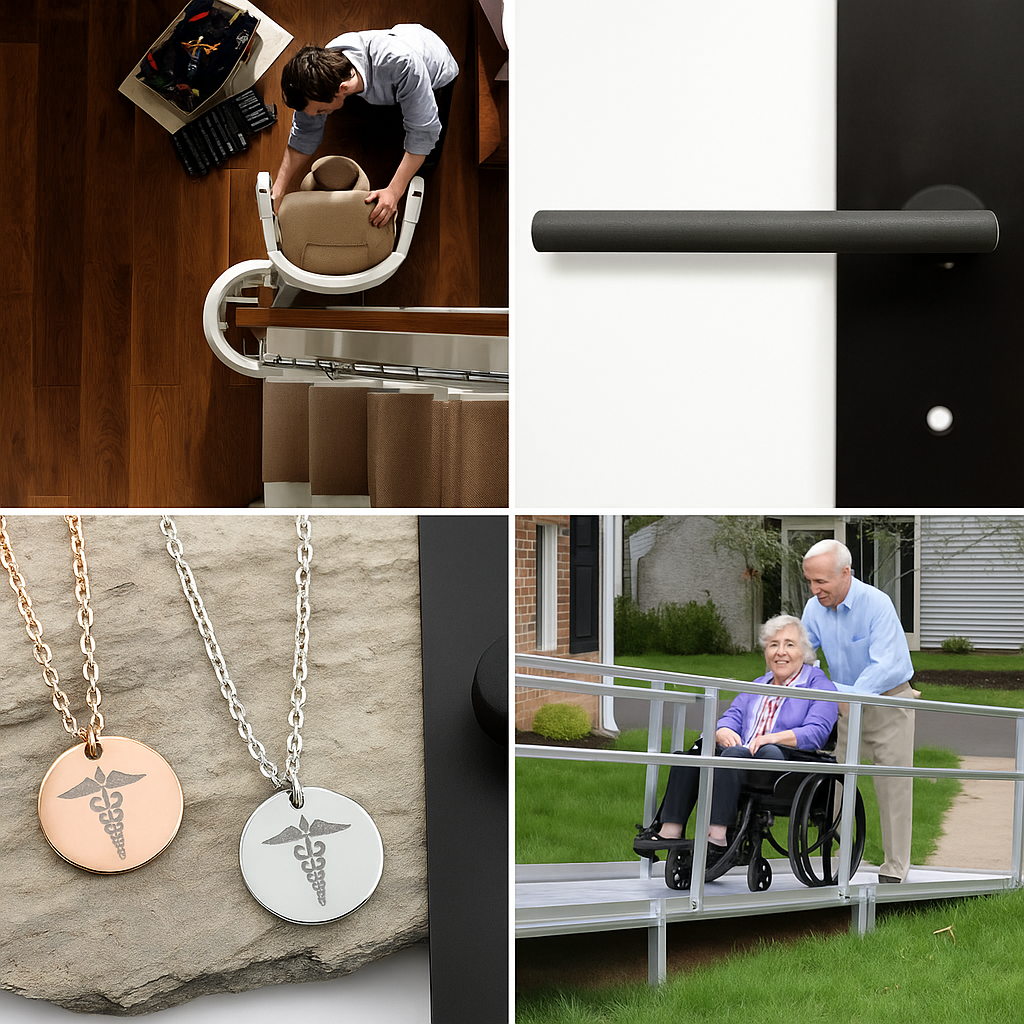
- Install lever-style door handles and faucet handles. These are easier for arthritic hands to operate and reduce strain on wrists and fingers.
- Consider stair lifts or ramps for multi-level homes. These allow continued access to upper levels while removing a major fall risk.
- Lower closet rods and kitchen shelving for easier access. Reducing the need to climb or stretch helps prevent overexertion injuries.
- Upgrade flooring to slip-resistant materials. Non-slip vinyl, cork, or textured tile offer traction while being soft enough to reduce injury from minor falls.
- Add medical alert systems for emergency response. Fall-detection pendants or smart speakers can ensure help arrives quickly if an accident occurs.
The National Institute on Aging offers additional guidance on planning home modifications to support aging in place and maintaining independence safely.
Many families pair these upgrades with the use of mobility scooters for seniors to help older adults stay active while reducing physical strain.
Home Safety Checklist for Seniors
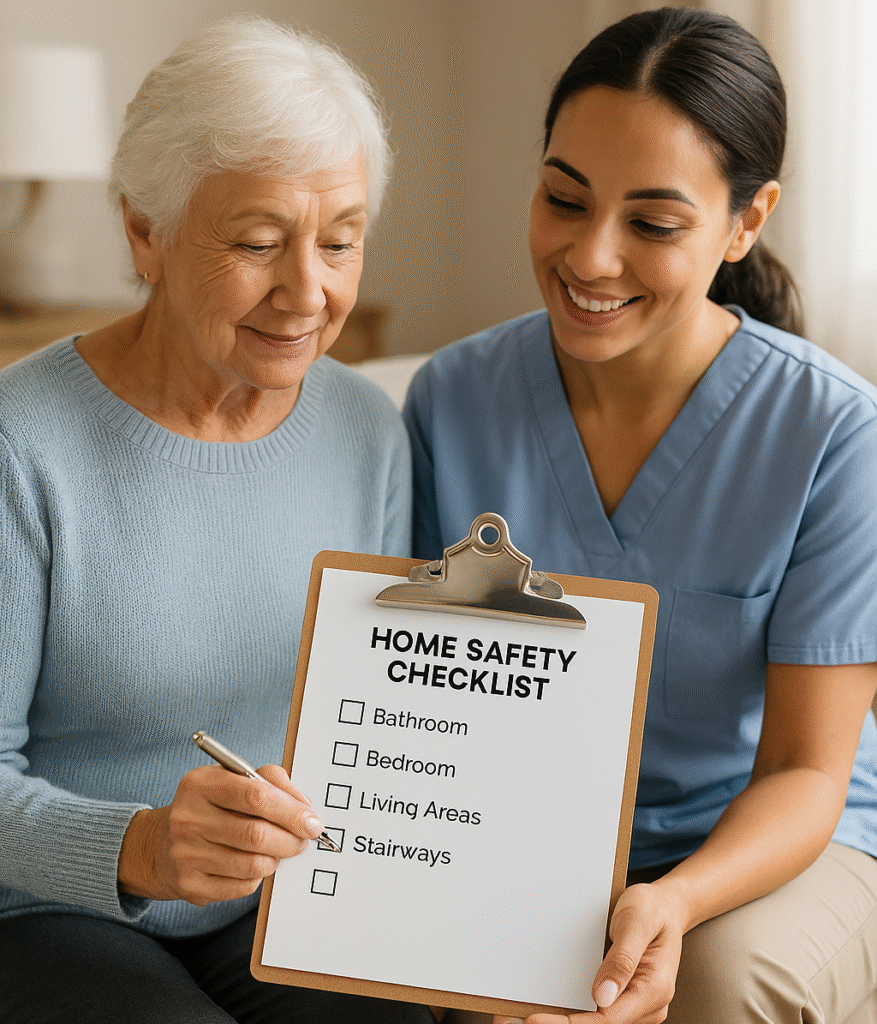
Use this checklist to walk through each room of the home and spot potential hazards:
- Remove or secure all loose rugs and cords from walkways
- Install grab bars in the bathroom and handrails on both sides of stairways
- Place night lights along hallways, in bedrooms, and bathrooms
- Keep floors clear of clutter, cords, and low furniture
- Adjust furniture layout to allow clear paths for walkers or rollators
- Ensure all commonly used items are within easy reach
- Confirm smoke detectors, carbon monoxide detectors, and fire extinguishers are functional
- Keep emergency phone numbers visible near each phone
Final Thoughts
A safe home empowers seniors to remain independent, active, and confident. As a physician, I’ve seen how addressing hazards early can prevent injuries, preserve dignity, and give families peace of mind. These home safety tips for seniors are more than just prevention—they are a pathway to preserving mobility, reducing caregiver burden, and supporting a fulfilling life at home.
With thoughtful planning and a few strategic upgrades, any home can be transformed into a safer space that allows seniors to age in place with comfort and security.
Frequently Asked Questions About Home Safety for Seniors
How can I make my home safer for an elderly parent?
Start by identifying common hazards such as loose rugs, poor lighting, and cluttered walkways. Add grab bars in the bathroom, secure rugs with non-slip backing, improve lighting in hallways and staircases, and keep everyday items within easy reach to prevent falls and overreaching. If your parent has even mild balance issues, consider introducing supportive mobility aids like walkers and rollators for seniors to provide extra stability during daily activities.
What are the biggest safety risks for seniors living at home?
The most common risks are falls caused by slippery surfaces, uneven flooring, poor lighting, and clutter. Other hazards include hard-to-reach storage, lack of handrails, and using unstable furniture for support. These issues can quickly lead to injuries and hospitalizations.
Do seniors really need grab bars if they don’t have mobility problems?
Yes. Even active older adults experience occasional dizziness or fatigue, and grab bars provide crucial support during sudden balance loss. Installing them proactively is one of the most effective home safety tips for seniors because it prevents first-time falls before they happen.
Are there low-cost ways to improve home safety for seniors?
Absolutely. Simple changes like adding non-slip pads under rugs, installing night lights, decluttering walkways, and rearranging furniture to create wide, clear paths can significantly reduce fall risk without major expense or renovations.
How often should I reassess home safety for an older adult?
It’s best to review the home environment at least once a year—or immediately after any health changes, new mobility issues, or a fall. Regular safety checks help catch emerging hazards early, preventing injuries and preserving independence.
Medical Disclaimer:
This content is for informational and educational purposes only and is not intended as medical advice or a substitute for professional healthcare. Always consult a qualified healthcare provider regarding any questions or concerns about your health or the health and safety of your loved ones.
